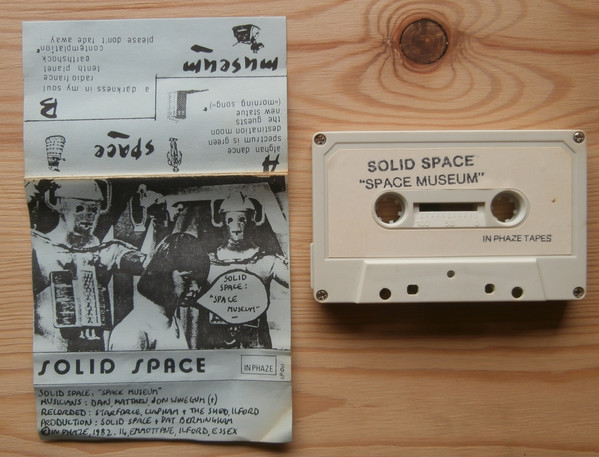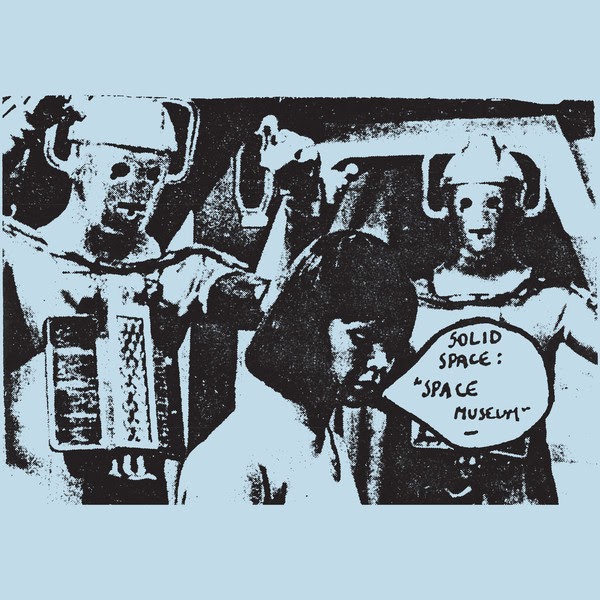
They were really complex and dystopian (…) there’s a whole story in it,’’ Maf said sincerely praising his friend, which he did so often throughout our conversation. They decided to split the band up on the B-side the guitars and drummer did one track and Maf (bass) and Dan (keyboards) created the track ‘Platform 6’, which features on Dark Entries reissue.‘’I was listening back to ‘Platform 6’ and marvelling over what a great lyricist Dan was at 16. The inception of Solid Space began when on Exhibit A’s second record, Distance. I think that edginess, that feeling of being on the brink of something either beautiful or terrible, is what we wanted to convey with Space Museum and maybe that uncertainty is the reason it is resonating at this new point in time.’’ There’s a global media narrative that the more ‘connected’ we are, the better our lives will be, but every time there’s another data breach, or fake news scandal, or cyber-attack, there’s this nagging feeling at the back of our minds that all is not as it should be. In some ways this decade feels like a bit of an echo of the late ‘70s and early ‘80s. When I asked Dan why he thought the record had struck a new chord today, he offered “I think it’s interesting that the ambivalence we were feeling about new technology at the time of recording Space Museum, has a parallel in the debate about data and online services today. At the same time bands like The Cure, Kraftwerk, Human League and artists like Gary Numan were climbing into the charts and popularising the synth-pop sounds of the future. The technological boom had welcomed computers into peoples homes and there was excitement about this new age of information and digital devices. The result is something pure and honest a perfectly imperfect piece of work. All these imperfect elements drift in and out of time, and tune, but are threaded together with oddly impeccable production. The original tape is undeniably amatuer cheap drum-machine sounds, awkward post-puberty vocals not yet fitting into their deadpan deliveries, angsty lyrics of escaping earthly woes and wobbly synth melodies interweaved with slightly-off guitar strumming.

Despite the bleak minimalism and gloomy lyrics of evil cybermen and a hopeless future, tracks like ‘Destination Moon’ and ‘A Darkness in my Soul’ gush with a sweet warmth. The twinkling melody of opening-track ‘Afghan Dance’ clumsily stumbles over itself in the endearing hurry of someone under pressure trying to get-it-right-the-first-time.

But more so, it was the flaws, naivety and awkwardness that charmed me. I came across a stream of the tape thanks to the divine intervention that is YouTube algorithms in 2013 and was immediately enamoured by its DIY post-punk electronics and jangly synth-pop melodies. From there he and his team, including music photographer Matthew (Maf) Vosburgh, laboured over the magazine and eventually transformed it into a thriving operation fuelled by their love of music.
#Solid space space museum rar professional
“Why read Geography when you can surround yourself with the latest in music technology, and get paid for writing about it? I wasn’t talented enough to be a rock star, a hit record producer or a professional DJ. He fobbed off University and accepted the role. Four months after his short stint there the magazine was re-skinned and he was offered £100 a week to return as the editor.

In a retrospective piece recalling his time at the magazine he described it as a war-zone in a decrepit building, one where the editors were forced to write everything by hand as they didn’t even have typewriters, let alone a computer. In 1983, a 19 year old North Londoner Dan Goldstein started a job as sub-editing temp at the Cambridge-based music magazine Electronics and Music Makers.


 0 kommentar(er)
0 kommentar(er)
